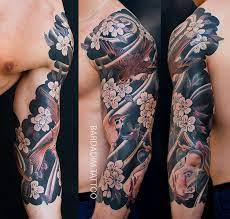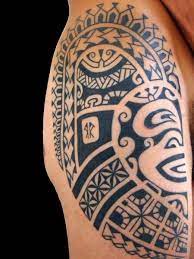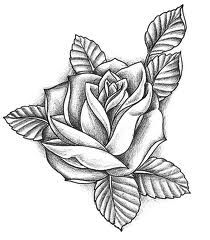
Japanese Tattoos often take inspiration from Shintoism, a religion that believes evil comes from spirits and can be controlled with purification rituals, prayer, and offerings to gods.
Phoenixes, mythological birds that represent rebirth and triumph, can also be found across many cultures worldwide – making them a fitting element to incorporate into Japanese protection tattoos.
Oni Mask
Though once associated with evil demons who drag souls away to hell, oni masks have more recently symbolized protection. Wearers wear them during festivals to ward off bad luck or unwanted entities. People looking for added protection may wish to get an oni mask tattoo on their ankles, thighs, or forearms as an extra measure. Onis are red-faced Japanese demons with horns and hostile expressions – perfect mascots if they prefer playing it safe!
Hannya’s masks depict demonic female spirits with jealousy and spite. They are popularly used in Noh theater as protective guardians, similar to how gargoyles function in Western society.
Samurai
From the 14th to 19th centuries, Japan was ruled by local warlords (daimyo), who constructed armies to defend their riches. Their warriors were known as samurai.
They donned armor featuring the katana, a long, curved sword with a broad blade, and the wakizashi, a shorter weapon with an expanded blade. In addition, they carried a polearm called yari that allowed them to attack opponents on horseback.
Samurai warriors became known for their disciplined lifestyle that celebrated stoicism while drawing inspiration from Zen Buddhism’s belief that salvation came from within themselves. Their unwritten code of conduct eventually evolved into Bushido, emphasizing loyalty even to death.
Dragon
The dragon is an iconic Japanese tattoo symbol. While in Western culture, dragons may symbolize strength and ferocity, they are seen as protectors who use their power for good in Japan. They represent wisdom and protection from illness, disaster, and other dangers. This stunning tattoo depicts a dragon with red chrysanthemums as its backdrop – a fantastic way to demonstrate your devotion to this legendary beast!
Koi fish Tattoos are an increasingly popular trend in Japan, symbolizing perseverance and courage. According to Japanese legend, any koi that swims upstream will eventually transform into a dragon! They make for the perfect symbol for anyone hoping to realize their goals.
Jorogumo
The Jorogumo is an insidious half-spider/half-woman yokai that can transform into seductive women to seduce unwitting men into submission. Their biwa music can hypnotize victims before trapping them in webs and draining their life force away.
Your body is covered with a chitin exoskeleton that allows it to change shape, with primary spinnerets within your abdomens that produce silk as required. Neurotoxins paralyze prey, while hemotoxic venom dissolves and digests flesh. For an added layer of protection, these predators can even send shockwaves through their spines to immobilize victims.
Namazu
Japanese folklore holds that Earth’s crust movement is controlled by an underground catfish known as Namazu. This creature lives deep beneath Japan, restrained by Kashima, who keeps him under check until he releases him; then Namazu begins its chaos-inducing movements and causes earthquakes.
After the Ansei Edo earthquake of 1855, woodblock prints featuring Namazu became immensely popular as protective talismans against earthquakes or to call on Takemikazuchi for assistance if one did occur. These ukiyo-e depictions were used in homes to ward off further seismic shocks or summon Takemikazuchi should they appear.
But the namazu also served as an expression of social and political inequality, often depicted as an omen of disaster or as an evil-minded Robin Hood who redistributed wealth from the aristocracy to the working class.
Cherry Blossoms
Cherry blossom trees have long been revered as springtime renewal and beauty symbols. Every year, a nationwide ritual known as Hanami takes place to appreciate their delicate petals while taking part in relaxing social gatherings under them.
This aesthetic can be found throughout Japanese culture, from paintings of ukiyo-e woodblock prints to intricate designs painted on byobu traditional folding screens and everyday consumer goods such as bento lunch boxes. However, its short lifespan serves as a reminder that life is fleeting, and you should treasure each moment while it lasts.

